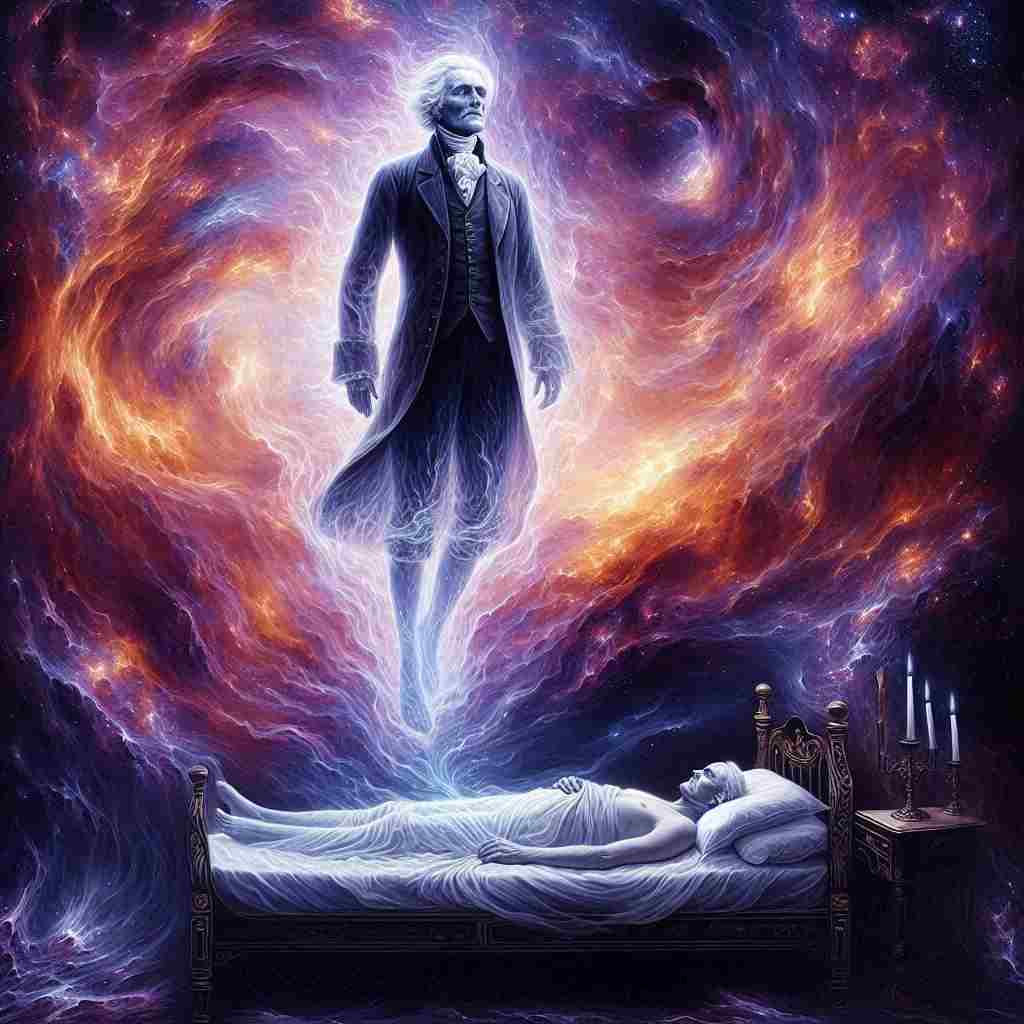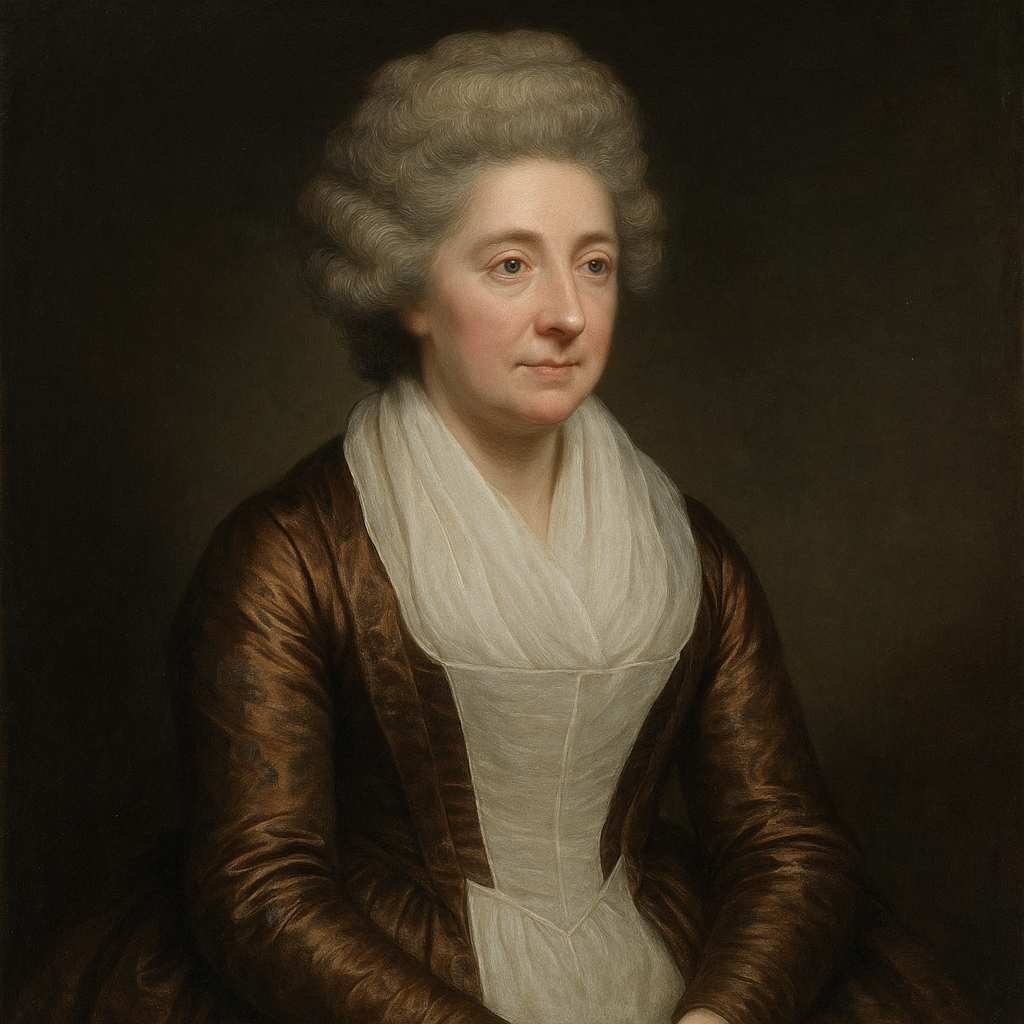Life
Anna Lætitia Barbauld
1743 to 1825

Life! I know not what thou art,
But know that thou and I must part;
And when, or how, or where we met,
I own to me’s a secret yet.
But this I know, when thou art fled,
Where’er they lay these limbs, this head,
No clod so valueless shall be,
As all that then remains of me.
O whither, whither dost thou fly,
Where bend unseen thy trackless course,
And in this strange divorce,
Ah tell where I must seek this compound I?
To the vast ocean of empyreal flame,
From whence thy essence came,
Dost thou thy flight pursue, when freed
From matter’s base encumbering weed?
Or dost thou, hid from sight,
Wait, like some spell-bound knight,
Through blank oblivious years th’ appointed hour,
To break thy trance and reassume thy power?
Yet canst thou without thought or feeling be?
O say what art thou, when no more thou ’rt thee?
Life! we’ve been long together,
Through pleasant and through cloudy weather;
’Tis hard to part when friends are dear;
Perhaps ’t will cost a sigh, a tear;
Then steal away, give little warning,
Choose thine own time;
Say not Good night, but in some brighter clime
Bid me Good morning.
Anna Lætitia Barbauld's Life
Introduction
Anna Lætitia Barbauld's poem "Life" stands as a testament to the enduring human fascination with the nature of existence and the enigmatic journey of consciousness. This 18th-century work, penned by one of the most influential literary figures of her time, grapples with the fundamental questions of being, mortality, and the uncertain fate that awaits us all beyond the veil of death. Through a masterful blend of rhetorical devices, philosophical inquiry, and emotive language, Barbauld crafts a piece that resonates deeply with readers across generations, inviting us to contemplate our own relationship with the ephemeral nature of life.
The Structure and Form of "Life"
Barbauld's poem is structured in a way that mirrors the complexity and unpredictability of life itself. The irregular rhyme scheme and varying line lengths create a sense of flux and movement, echoing the ever-changing nature of existence. The poem begins with short, decisive lines that gradually expand into longer, more contemplative verses, perhaps reflecting the way our understanding of life deepens and becomes more nuanced as we age.
The use of enjambment throughout the poem serves to create a sense of continuity and flow, mirroring the unbroken stream of consciousness that defines our lived experience. This technique is particularly effective in lines such as "O whither, whither dost thou fly, / Where bend unseen thy trackless course," where the thoughts seem to tumble forth, unrestrained by the confines of formal structure.
Personification and Apostrophe: Life as an Entity
One of the most striking features of Barbauld's poem is her bold personification of life itself. By addressing life directly, she employs the rhetorical device of apostrophe, imbuing the abstract concept with agency and personality. This personification is evident from the very first line: "Life! I know not what thou art," establishing an intimate yet mysterious relationship between the speaker and the concept of life.
This personification serves multiple purposes. Firstly, it allows Barbauld to explore the nature of existence through a more tangible lens, making the abstract concept more accessible to the reader. Secondly, it creates a poignant emotional resonance, as life becomes not just a state of being, but a companion on our journey through time.
The Paradox of Knowing and Unknowing
Throughout the poem, Barbauld skillfully navigates the tension between knowledge and ignorance, certainty and doubt. The repeated use of "I know" and "I know not" creates a dialectic that underscores the fundamental mystery of existence. This paradox is perhaps most clearly articulated in the lines:
"And when, or how, or where we met, I own to me's a secret yet. But this I know, when thou art fled, Where'er they lay these limbs, this head, No clod so valueless shall be, As all that then remains of me."
Here, the speaker acknowledges the limits of human understanding while simultaneously asserting the certainty of mortality. This juxtaposition of known and unknown elements reflects the human condition - our struggle to comprehend the incomprehensible, to find meaning in the face of inevitable oblivion.
The Quest for Identity and Continuity
A central theme of "Life" is the search for a coherent sense of self in the face of change and dissolution. Barbauld's questioning of "where I must seek this compound I?" speaks to the philosophical problem of personal identity over time. The use of the term "compound I" is particularly intriguing, suggesting a complex, multifaceted nature to human consciousness that defies simple definition.
The poem grapples with the possibility of an afterlife or some form of continued existence beyond death. Barbauld presents various speculative scenarios, from the soul returning to "the vast ocean of empyreal flame" to waiting "like some spell-bound knight" for resurrection. These vivid metaphors serve not only to explore different cultural and religious conceptions of the afterlife but also to highlight the fundamental uncertainty surrounding our ultimate fate.
The Materiality of Existence
Barbauld does not shy away from the physical reality of death and decay. The reference to "these limbs, this head" becoming a valueless "clod" after death starkly reminds us of our material nature. This emphasis on the corporeal aspects of existence creates a tension with the more ethereal, spiritual elements explored elsewhere in the poem.
The phrase "matter's base encumbering weed" is particularly striking, suggesting a Platonic or Neoplatonic view of the body as a temporary, perhaps even burdensome, vessel for the soul. This dichotomy between the physical and the spiritual runs throughout the poem, reflecting the enduring philosophical debate over the nature of consciousness and its relationship to the material world.
Time and Temporality
The poem's exploration of time is multifaceted and nuanced. Barbauld moves fluidly between past, present, and future, reflecting on the mystery of life's beginning ("And when, or how, or where we met"), the inevitability of its end ("I know that thou and I must part"), and the uncertainty of what lies beyond ("O say what art thou, when no more thou 'rt thee?").
The concept of "blank oblivious years" is particularly evocative, suggesting a state of non-existence or unconsciousness that may precede or follow our brief moment of awareness. This phrase encapsulates the vertiginous feeling of contemplating the vast expanses of time before our birth and after our death, periods in which we have no part.
The Emotional Journey: From Fear to Acceptance
As the poem progresses, there is a subtle but discernible shift in tone from questioning and anxiety to a kind of resigned acceptance, even warmth. The final stanza, beginning with "Life! we've been long together," marks a dramatic change in the speaker's attitude towards life and death.
The metaphor of life as a long-time companion through "pleasant and through cloudy weather" is deeply touching, transforming the abstract concept into something akin to a dear friend. This personification reaches its zenith in the final lines, where the speaker requests not a "Good night" but a "Good morning" in "some brighter clime."
This conclusion suggests a remarkable evolution in the speaker's perspective. The fear and uncertainty that permeate the earlier parts of the poem give way to a sense of hope and continuity. Death is no longer seen as an end, but as a transition - not a "Good night," but the dawn of a new day.
Conclusion
Anna Lætitia Barbauld's "Life" is a tour de force of philosophical poetry, encapsulating within its lines some of the most profound questions that have occupied human thought for millennia. Through its skillful use of personification, metaphor, and rhetorical questioning, the poem invites us to contemplate our own existence and our relationship with the inexorable passage of time.
The poem's enduring appeal lies in its ability to balance intellectual rigor with emotional resonance. Barbauld does not offer easy answers to the questions she poses, but rather creates a space for reflection and introspection. In doing so, she transforms the individual's struggle with mortality into a shared human experience, offering comfort in the universality of our uncertainties and hopes.
Ultimately, "Life" stands as a testament to the power of poetry to grapple with the most fundamental aspects of the human condition. It reminds us that in the face of life's great mysteries, we are not alone - generations before us have walked this path, questioning, wondering, and finding beauty in the journey itself. As we continue to ponder the nature of existence in our own era, Barbauld's words continue to resonate, bridging centuries with their timeless exploration of what it means to be alive.
This text was generated by AI and is for reference only. Learn more
Want to join the discussion? Reopen or create a unique username to comment. No personal details required!



Comments
No comments yet. Be the first to comment!